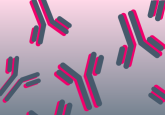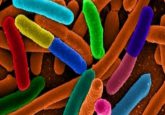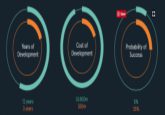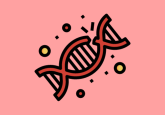Rare disease drug development: challenges, support and hopes for the future
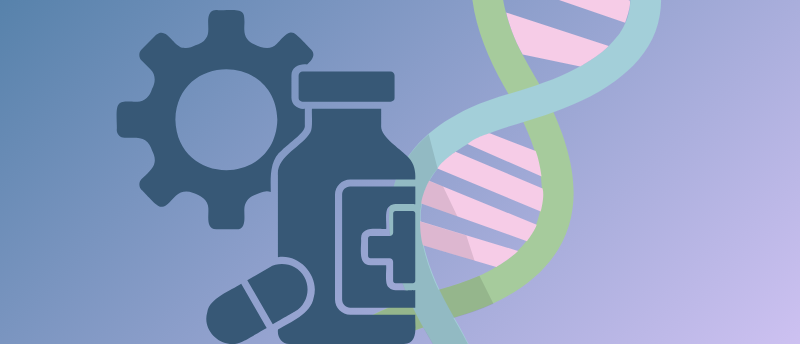
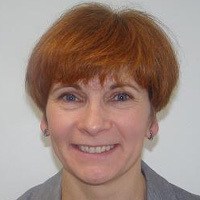 Oxana Iliach is a Senior Director of Regulatory Strategy at Certara (PA, USA), a biotech company that offers comprehensive solutions for transforming and accelerating drug development. In her spare time, Oxana volunteers at the International Rare Disease Research Consortium (IRDiRC), where she is co-chair of the Regulatory Scientific Committee (RSC).
Oxana Iliach is a Senior Director of Regulatory Strategy at Certara (PA, USA), a biotech company that offers comprehensive solutions for transforming and accelerating drug development. In her spare time, Oxana volunteers at the International Rare Disease Research Consortium (IRDiRC), where she is co-chair of the Regulatory Scientific Committee (RSC).
In this interview, Oxana discusses the challenges with rare disease drug development, how they can be addressed and the role of the IRDiRC in supporting rare disease drug development. Oxana also shares what she would like to see in the rare disease landscape in 2025 and beyond.
What is the focus of your work?
In my everyday work at Certara, I provide regulatory strategic support at different stages of product development. I also ensure that clients receive the most up-to-date regulatory advice and strategy. At the IRDiRC, I focus on the regulatory aspects of rare disease drug development. The RSC, together with other members, is addressing the regulatory gaps created by the fast-moving pace of rare disease innovation and therapeutic development.
Can you explain what biosimulation is and how it can support rare disease drug development?
In my opinion, the best description of biosimulation and its applicability in the context of rare diseases was provided by my colleague Rajesh Krishna, Sr. Distinguished Scientist and Head of Certara’s Centers of Excellence, in the latest publication in Drug Discovery and Development.
“Biosimulation helps improve statistical power in studies of rare diseases by simulating larger populations based on a limited number of real-world patients. This allows for more precise conclusions to be drawn from fewer patients, increasing the likelihood that a statistically significant effect can be observed even with a small sample size. One can also capitalize on shared molecular etiologies to enhance the subject pool across ‘like’ indications.”
What are some of the challenges with rare disease drug development?
There are multiple challenges with rare disease drug development, with publications and presentations on this topic from different perspectives. From a regulatory perspective, I would like to highlight the following major challenges. Firstly, the fast pace of innovation in drug development for rare diseases creates challenges for regulators, and, in some cases, forces regulatory authorities to work with treatments and products that do not fit into the current regulatory framework. Secondly, the majority of rare disease drug development is global; however, there is a known lag in the approval of drugs for rare diseases in different jurisdictions. For instance, the majority of rare disease drugs are being developed in the USA and EU and, most often, are being approved by the US FDA and European Medicines Agency following regulatory submissions and approvals in other jurisdictions, which can cause delays in product availability. Finally, collecting, processing and sharing post-marketing data on approved drugs for rare diseases presents unique challenges, such as difficulties in protecting patient personal information.
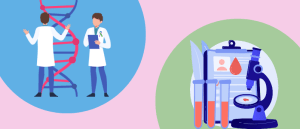 Rare Disease Day: national genomic medicine programs and recent research
Rare Disease Day: national genomic medicine programs and recent research
Here, we explore three wide-reaching national programs that have caught our eye as they navigate the human genome and its place in rare disease research.
How can industry and rare disease researchers change their working practices to address these challenges?
Both industry and researchers can help to address the above-mentioned regulatory challenges. One of the easiest ways is early engagement with regulatory authorities by having a product-specific meeting with health authorities, or by attending a public meeting conducted by a health authority. However, the engagement should continue through the entire product development lifecycle. This will help companies reduce the risk of regulatory rejection and help regulators evaluate potential risks and benefits of the product for patients.
Also, working through an umbrella organization such as the IRDiRC could help to create a united approach or a framework for some unique and innovative products, or even develop a ‘cluster’ of products and development.
What is the role of the IRDiRC in rare disease drug development?
In my opinion, the role of the IRDiRC in rare disease drug development is extremely important and it is growing. The IRDiRC is the only international organization that brings together various stakeholders and gives them an opportunity to collaborate and share knowledge in rare diseases with the very defined purpose of accelerating rare disease diagnostics, drug development and access.
How can researchers and industry make the most of the IRDiRC’s support?
There are multiple ways for researchers and industry to take advantage of the IRDiRC support. For example, by joining a Scientific Committee, Task Force or Working Group and participating in the IRDiRC conferences and workshops. Additionally, researchers and industry could utilize IRDiRC Recognized Resources in drug development and use IRDiRC publications in their work.
What does 2025 hold for the rare disease landscape?
This is a very loaded question, and it prompts me to think about a crystal ball. It is hard to predict the unpredictable, so instead, let’s talk about what we would like to see happening in the rare disease landscape in 2025 and beyond. Personally, I would like to see increasing synergy between different health authorities’ approaches and expectations for rare disease drug development. It would be ideal to see a sponsor being able to have a meeting simultaneously with multiple health authorities, especially for innovative and breakthrough drug developments. It would be extremely beneficial to the patients if a drug for a rare disease were approved simultaneously in multiple jurisdictions. It may not be happening in 2025, but, if we set a goal to achieve a higher level of synergy between different regulatory authorities, eventually, we will achieve this goal. I also believe that the IRDiRC is uniquely positioned to increase synergy in all aspects of rare disease drug development.
The opinions expressed in this interview are those of the interviewee and do not necessarily reflect the views of BioTechniques or Taylor & Francis Group.
